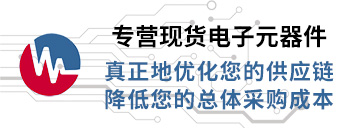

SL3S1204FTB0是NXP公司的一款UCODE产品,SL3S1204FTB0是UCODE 7,本站介绍了SL3S1204FTB0的封装应用图解、特点和优点、功能等,并给出了与SL3S1204FTB0相关的NXP元器件型号供参考。
SL3S1204FTB0 - UCODE 7 - UCODE - 智能标签与标牌IC - 恩智浦, LLC
NXP’s UCODE 7 IC is the leading-edge EPC Gen2 RFID chip that offers best-in-classperformance and features for use in the most demanding RFID tagging applications.
Particularly well suited for inventory management application, like e.g Retail and Fashion,with its leading edge RF performance for any given form factor, UCODE 7 enables longread distance and fast inventory of dense RFID tag population. With its broadband design,it offers the possibility to manufacture true global RFID label with best-in-classperformance over worldwide regulations.
The device also provides an automatic self pre-serialization feature for 96-bit EPC,following the industry aligned Multi Vendor Chip-based serialization scheme, and aParallel encoding feature. For applications where the same 58-bit Stock Keeping Unit(SKU) needs to be encoded on multiple tags, at the same time, a combination of bothfeatures improves and simplifies the tag initialization process.
On top UCODE 7 offers a Tag Power Indicator for RFID tag initialization optimization anda Product Status Flag for Electronic Article Surveillance (EAS) application.
Key features
- Read sensitivity -21 dBm
- Write sensitivity -16 dBm
- Parallel encoding mode: 100 items in 60ms
- Encoding speed: 16 bits per millisecond
- Innovative functionalities
- Tag Power Indicator
- Automatic self pre-serialization for 96-bit EPC
- Integrated Product Status Flag (PSF)
- Compatible with single-slit antenna
- Up to 128-bit EPC
- 96-bit Unique Tag Identifier (TID) factory locked,including 48-bit unique serial number
- EPC Gen2 v2.0 ready
Memory
- Up to 128-bit of EPC memory
- Supports self pre-serialization for 96-bit EPC
- 96-bit Tag IDentifier (TID) factory locked
- 48-bit unique serial number factory-encoded into TID
- No User Memory
- 32-bit kill password to permanently disable the tag
- 32-bit access password
- Wide operating temperature range: -40 °C up to +85 °C
- Minimum 100.000 write cycle endurance
Key benefits
- Long READ and WRITE ranges due to leading edge chip sensitivity
- Very fast bulk encoding
- Product identification through unalterable extended TID range, including a 48-bit serialnumber
- Reliable operation in dense reader and noisy environments through high interferencerejection
Antenna design benefits
- High sensitivity enables smaller and cost efficient antenna designs for the same retailcategory
- Tag Power Indicator features enables very high density of inlay on rolls without crosstalkissues during writing/encoding
- The different input capacitance for the single slit antenna solution provides anadditional possibility in tuning of the impedance for the antenna design
Label manufacturer benefit
- Large RF pad-to-pad distance to ease antenna design
- Symmetric RF inputs are less sensitive to process variation
- Single slit antenna for a more mechanically stable antenna connection
- Automatic self pre-serialization of the 96-bit EPC
- Extremely fast encoding of the EPC content
Supported features
- All mandatory commands of EPC global specification V.1.2.0 are implementedincluding:
- (Perma)LOCK
- Kill Command
- The following optional commands are implemented in conformance with the EPCspecification:
- Access
- BlockWrite (2 words, 32-bit)
- Product Status Flag bit: enables the UHF RFID tag to be used as EAS(Electronic Article Surveillance) tag without the need for a back-end data base.
- Tag Power Indicator: enables the reader to select only ICs/tags that have enoughpower to be written to.
- Parallel encoding: allows for the ability to bring (multiple) tag(s) quickly to the OPENstate and hence allowing single tags to be identified simply, without timing restrictions,or multiple tags to be e.g. written to at the same time, considerably reducing theencoding process
Markets
- Retail/Fashion (apparel, footwear, jewelry, cosmetics)
- Fast Moving Consumer Goods
Applications
- Retail Inventory management
- Supply chain management
- Loss prevention
- Asset management







